Basilicata sits tucked away in Southern Italy, and honestly, I stumbled into a time machine during my visit. The place blew me away with its wild contrast: ancient cave homes on one hand, medieval villages perched on hills on the other. You see how people got creative, adapting to rocky, dramatic landscapes over the centuries.
In Matera, I roamed the legendary Sassi districts. Here, prehistoric caves became homes, then churches, and now—believe it or not—boutique hotels and restaurants. The whole place is a UNESCO World Heritage site, and it feels both ancient and surprisingly lively.
My time in Basilicata felt like uncovering a secret Italy. Most travelers skip it, so the culture stays refreshingly genuine. The scenery is wild—buildings seem to grow straight from the rocks.
I wandered through cave churches with faded frescoes and climbed up to stone villages on mountaintops. Each spot reveals a slice of the region’s tangled history, shaped by Greek, Roman, Byzantine, and Norman influences.
If you chase both history and scenery, Basilicata delivers. I craved adventure without crowds, and this place gave me just that. I spent hours with my camera, capturing the blend of nature and architecture. Sometimes, I found myself completely alone—something you rarely get in Italy.
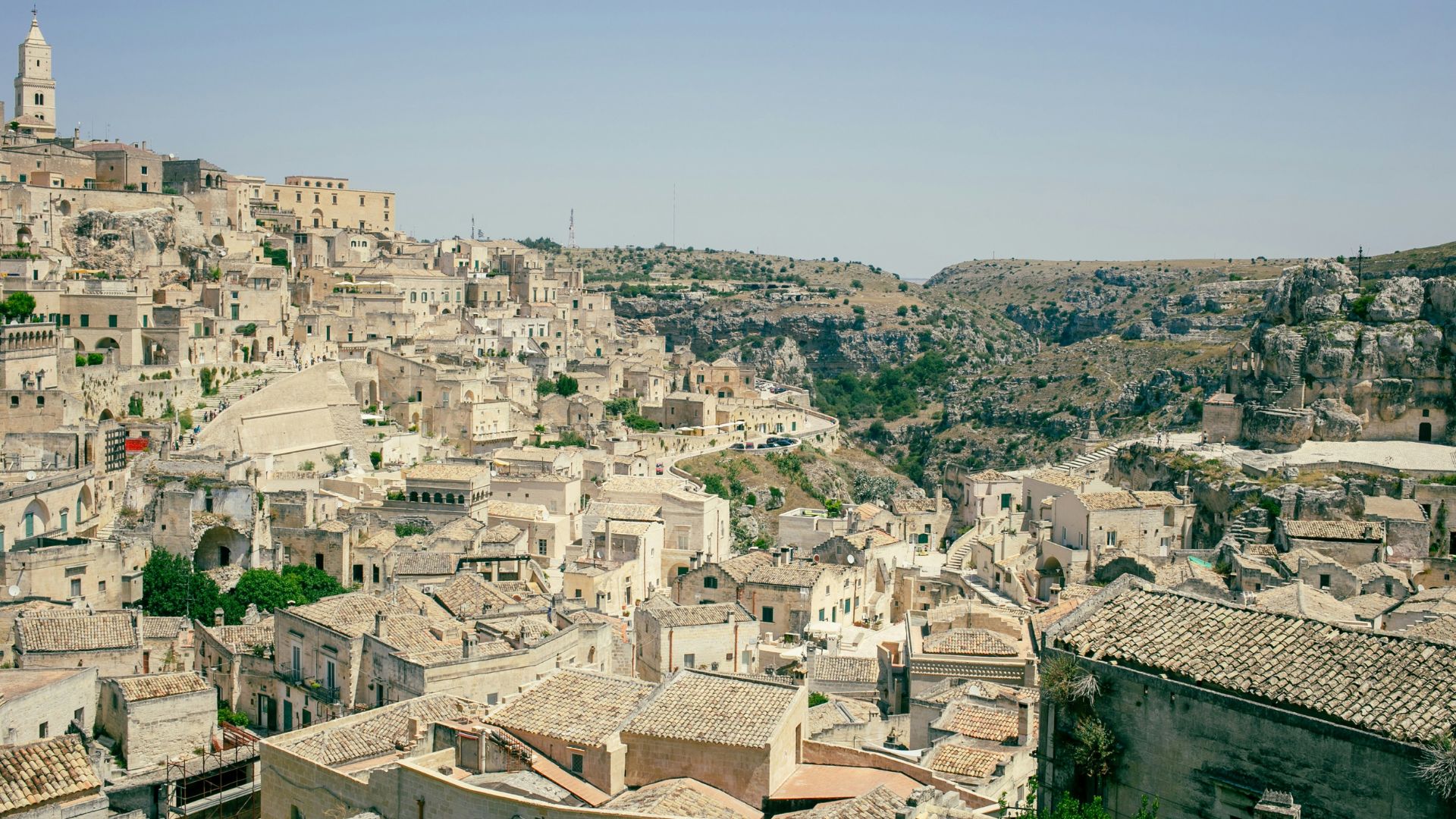
The Timeless Allure of Matera’s Sassi
Matera’s ancient cave dwellings grabbed my imagination and didn’t let go. These caves have seen thousands of years pass, yet they keep reinventing themselves.
Sassi: Basilicata’s Iconic Cave Dwellings
In Matera, people carved the Sassi di Matera right into the limestone hills. I got lost in the maze of passageways connecting these ancient homes—some go back to the Paleolithic era.
What really struck me is that families kept living here for centuries, constantly tweaking the caves to fit their needs.
Now, many Sassi house boutique hotels, restaurants, and even art galleries. I stayed at Sextantio Le Grotte della Civita, a luxury hotel that somehow keeps the cave vibe but adds modern comforts.
The limestone does something magical: it keeps the caves cool during scorching summers and cozy in winter. That’s some ancient climate control—pretty smart, if you ask me.
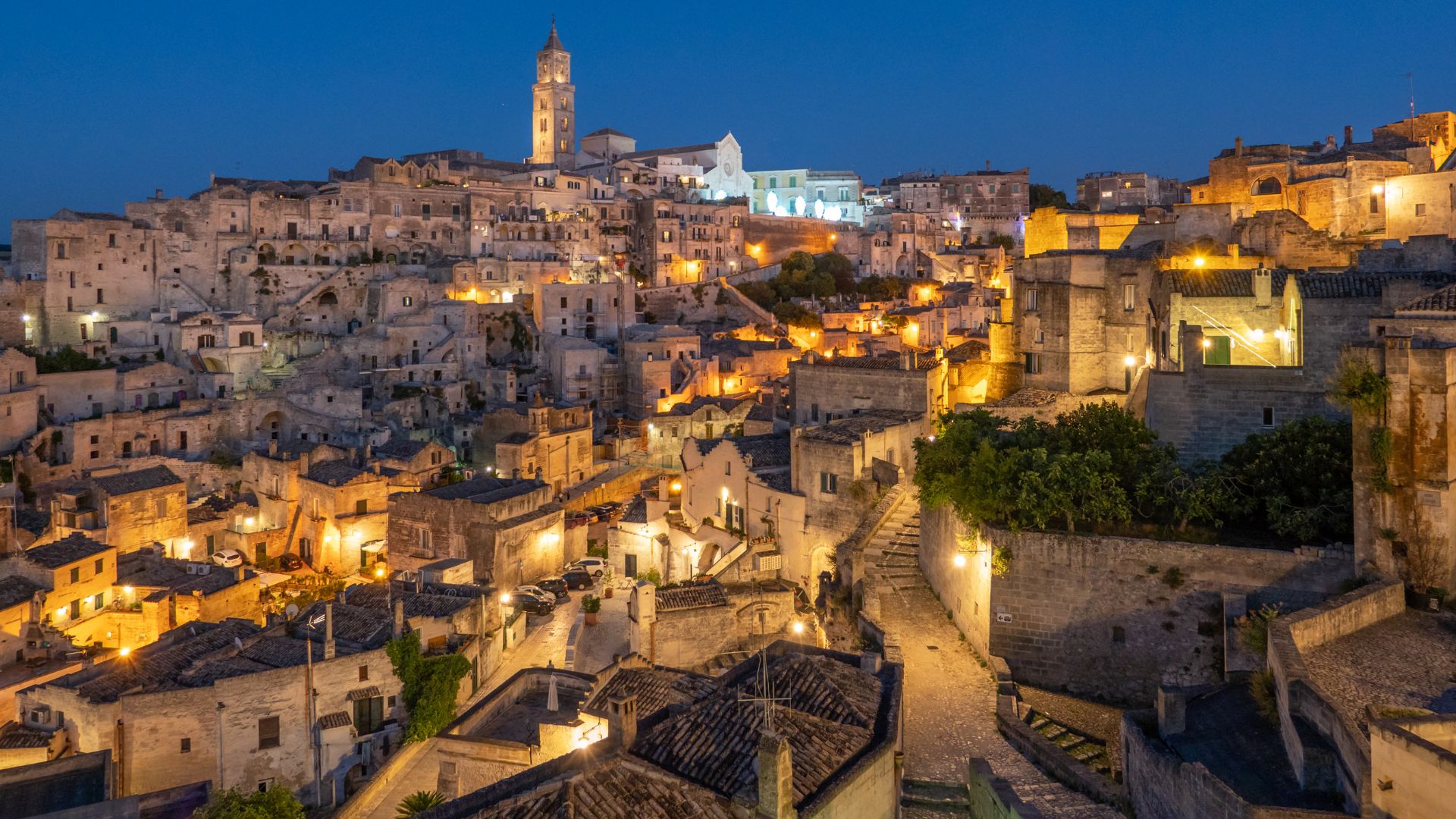
UNESCO World Heritage Recognition
UNESCO gave the Sassi World Heritage status in 1993, calling out their cultural importance. Before that, many caves sat empty for decades after the government forced people out in the 1950s due to rough living conditions.
UNESCO’s stamp of approval brought new energy and investment. As I walked through the Sassi, I saw how the area turned from “national shame” into a celebrated treasure.
Restoration rules are strict—builders use traditional materials and methods to keep things authentic.
Hollywood loves the Sassi’s dramatic looks, too. I stopped by spots where they filmed “The Passion of the Christ,” “Wonder Woman,” and “Ben-Hur.”
Cultural and Historical Significance
The Sassi aren’t just architectural oddities—they stand as proof of human resilience. People adapted and survived here for ages.
I found ancient rock churches scattered around, decorated with Byzantine frescoes. Some of these sanctuaries felt almost untouched by time.
The food connects deeply to tradition. I tasted crusty bread baked in old communal ovens and tried recipes locals have made for generations.
Every summer, the Festa della Bruna explodes in the streets with processions and celebrations. The whole thing feels ancient, mixing Christian and pagan roots.
What really stuck with me is how the past and present mix here. Residents keep old traditions alive while embracing modern life, creating a place where history and the now walk side by side.
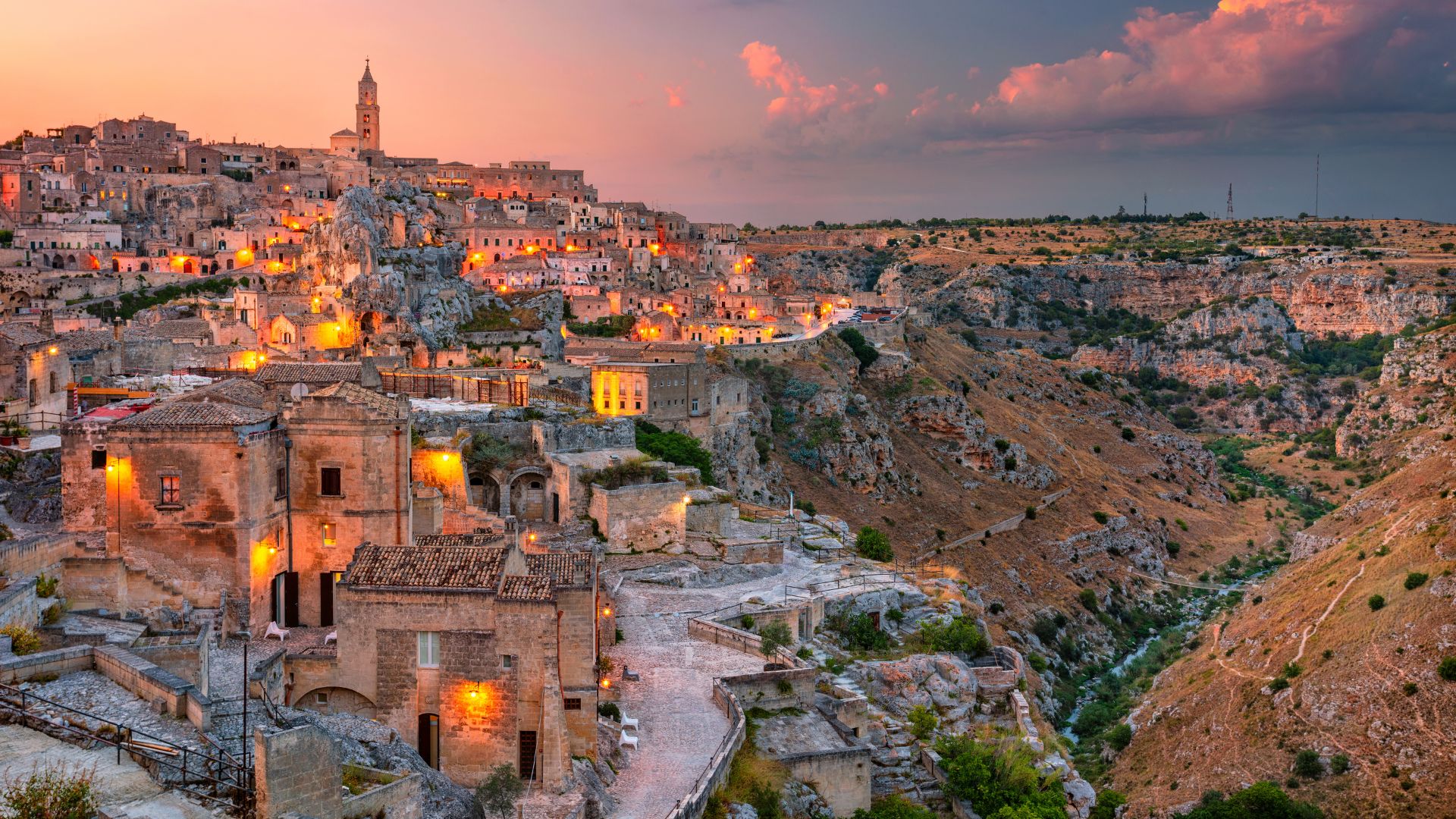
Hilltop Villages: From Craco’s Ghost Town to Maratea’s Charm
All over Basilicata, dramatic hilltop villages tell stories of both triumph and loss. These towns cling to rocks, offering jaw-dropping views and centuries of memories.
Craco: Basilicata’s Abandoned Marvel
I found Craco perched on a steep cliff, about 400 meters up. Its medieval outline looked haunting against the sky.
Craco’s story is rough—malaria, bandits, earthquakes, even rumors of witchcraft. The final blow came from a huge earthquake, forcing everyone to leave in the 1970s.
Now, Craco’s empty streets and crumbling buildings attract filmmakers. The ghostly atmosphere gives the town a cinematic edge. To me, it’s probably Italy’s most iconic ghost town.
If you visit, go with a guide. Some parts are still unstable and risky.
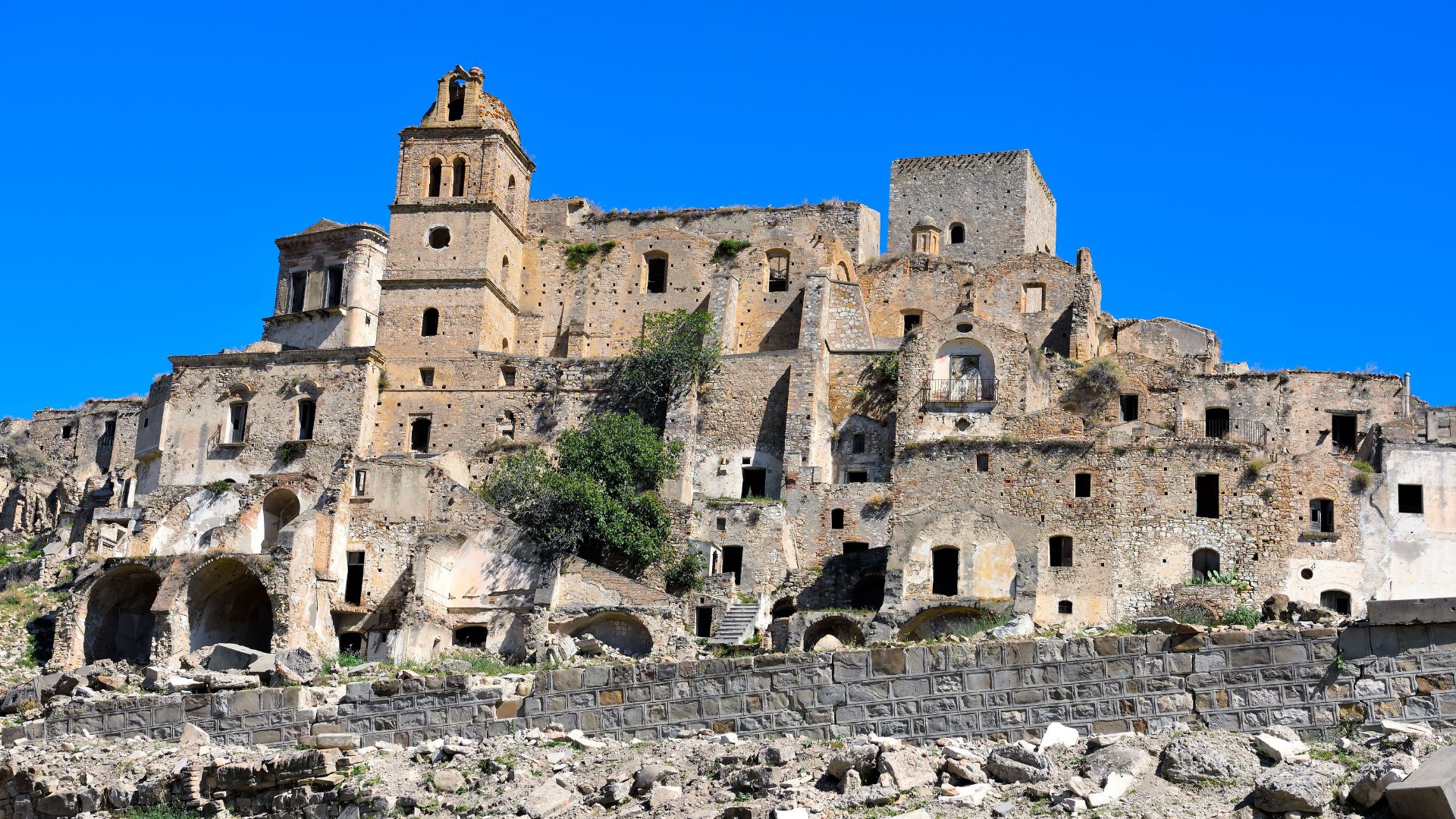
Maratea: The Pearl on the Tyrrhenian Sea
Maratea, though, is the opposite of Craco—alive and buzzing. Locals call it the “Pearl of the Tyrrhenian” thanks to its pristine beaches and sparkling waters.
The historic center drew me in with winding medieval streets and lively piazzas. The Christ the Redeemer statue towers above everything, second in size only to Rio’s.
I visited during summer, catching local festivals in full swing. Maratea blends mountains and sea, giving it a rare mix of landscapes.
You can find luxury hotels, but the town still feels authentic. It’s a favorite for travelers who want comfort and genuine culture.
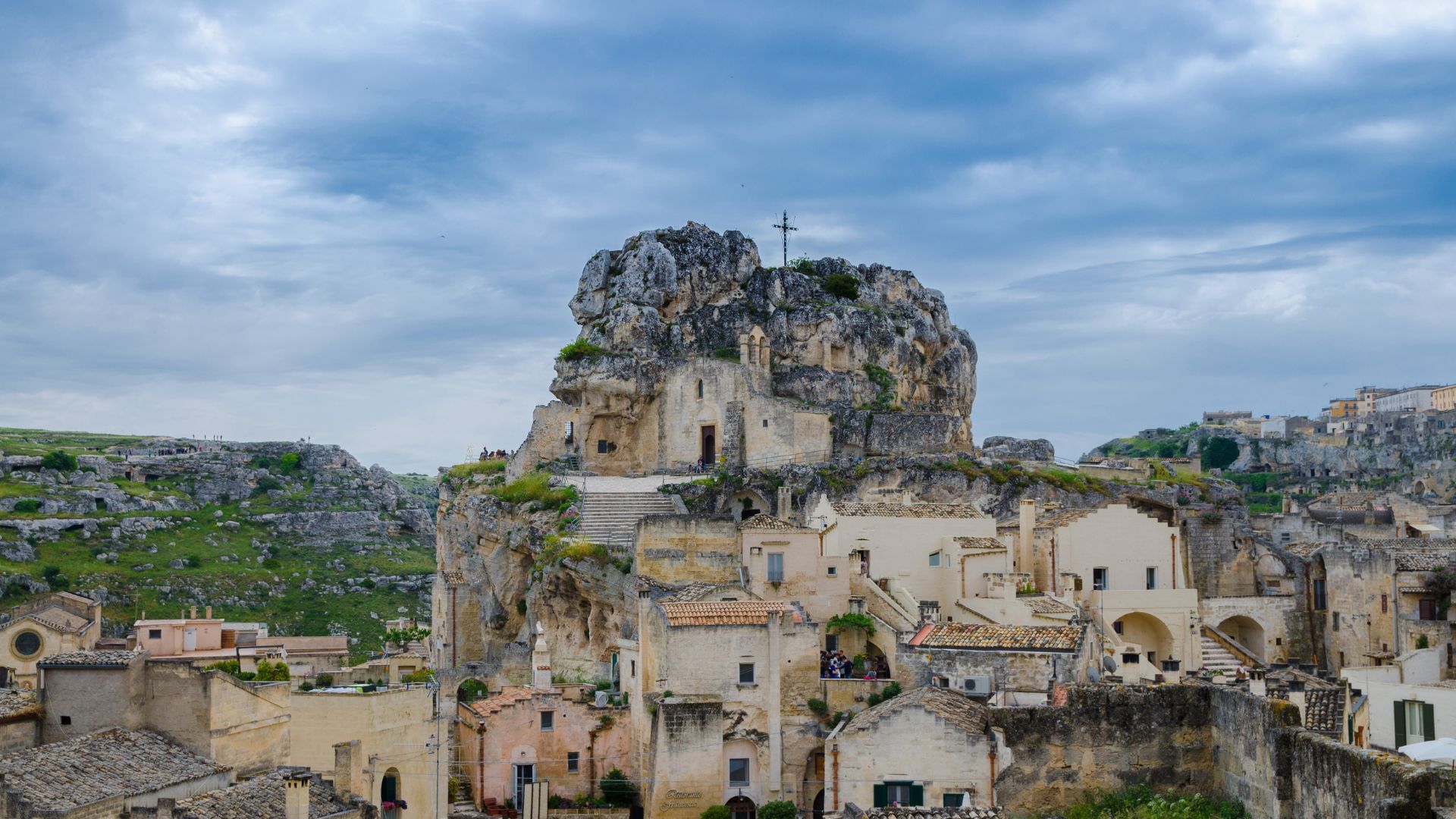
Other Notable Medieval Communities
Basilicata hides more hilltop gems. Castelmezzano and Pietrapertosa, set into dramatic rocks, offer insane views—and there’s the wild “Flight of the Angel” zipline between them.
Acerenza wowed me with its massive cathedral and untouched medieval streets. People call it the “cathedral town,” and the 11th-century duomo really dominates the skyline.
Venosa surprised me with ruins from Roman times and a Jewish catacomb. It’s the birthplace of Horace, the Roman poet, and somehow the place feels both ancient and welcoming.
Many villages throw summer festivals with local food, music, and traditions. I found these gatherings perfect for soaking up Basilicatan culture with friendly locals.
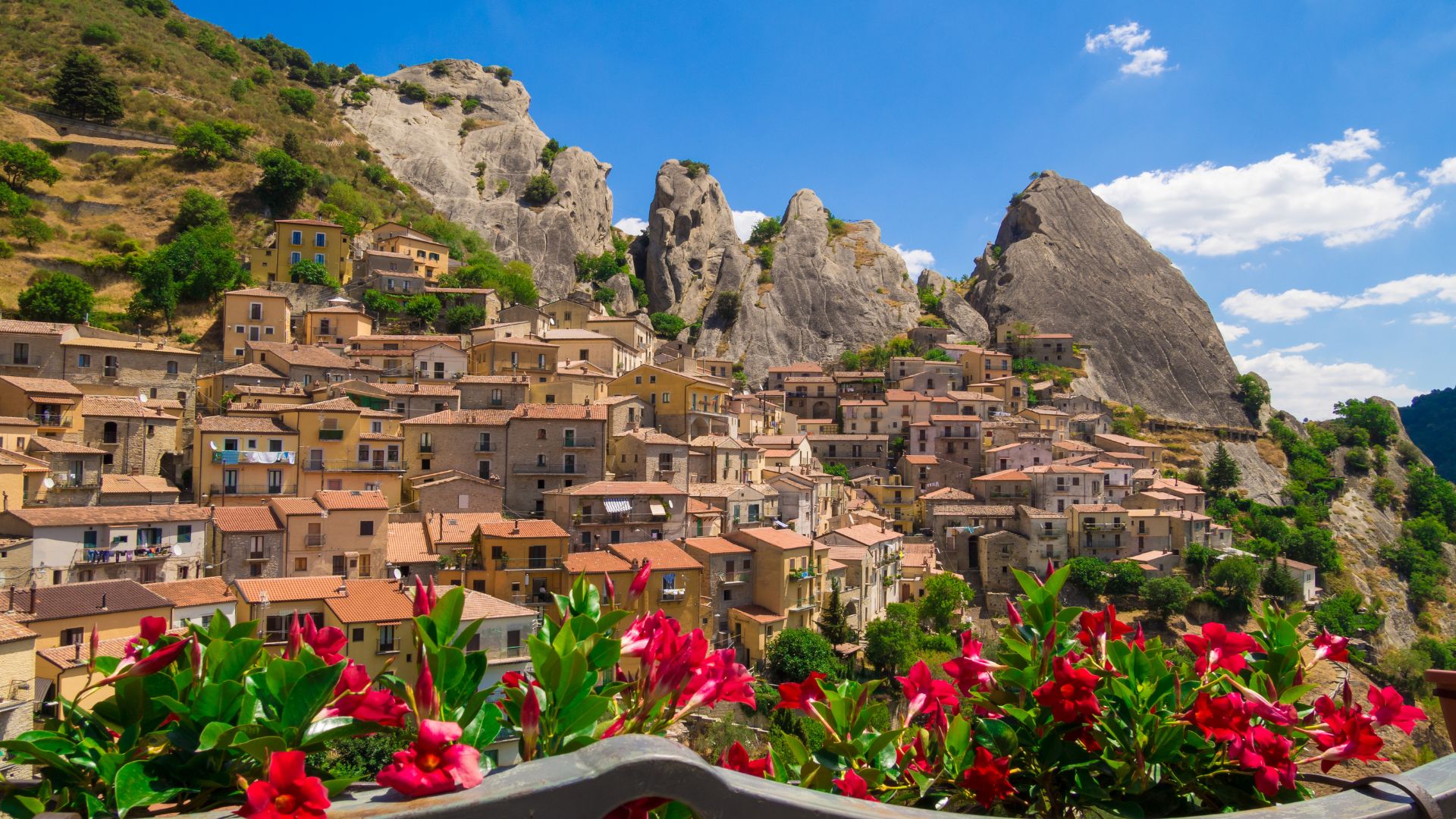
Churches, Cathedrals, and Spiritual Landmarks
Basilicata’s religious architecture is something else—a blend of faith, creativity, and the landscape itself. Sacred sites pop up in caves or cling to cliffs, making for some of Italy’s most memorable spiritual stops.
Rock-Cut Churches of Matera
The Park of the Rupestrian Churches in Matera totally blew my mind. Over 150 rock churches hide among the Sassi and nearby ravines. Instead of building them, people carved these sanctuaries straight into the limestone.
Most date to the Byzantine era, when monks hid out in these caves. Inside, I found vibrant frescoes that somehow survived centuries of wind and rain.
Santa Maria de Idris sits dramatically on a rocky knob, while Santa Lucia alle Malve holds a treasure trove of ancient frescoes. What makes these churches special is how they blend right into the landscape, creating a spiritual vibe you won’t find anywhere else.
Romanesque Cathedrals & Religious Sites
Away from the caves, Basilicata’s towns show off grand Romanesque cathedrals. The Cathedral of Matera, dedicated to Madonna della Bruna, rises above the city with a 52-meter bell tower you can spot from miles away.
The ornate rose window caught my eye, and the mix of styles tells a story of centuries of change. In the crypt, I found beautiful 13th-century frescoes.
Smaller towns have their own gems. Venosa’s Trinity Church has an unfinished section, so you can see ancient building methods frozen in time. Many churches reuse bits from old pagan temples, hinting at a tangled religious past.
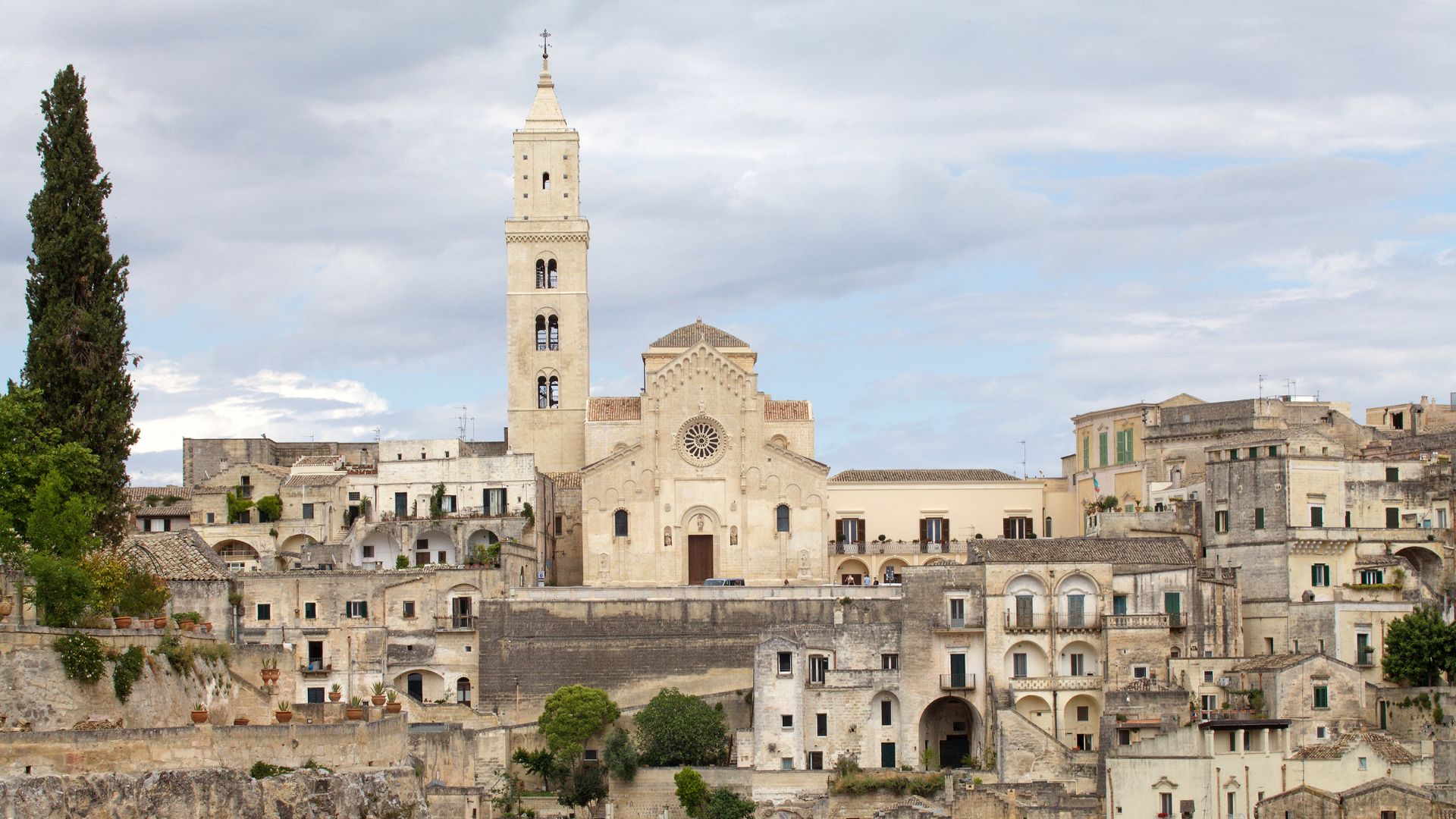
Pilgrimage Traditions and Festivals
Religion comes alive here during festivals. The Festa della Bruna in Matera is wild—a papier-mâché Madonna floats through the city and ends up dramatically torn apart by the crowd.
Each village celebrates its patron saint. Statues parade through the streets, while locals shower them with flower petals from balconies.
Old pilgrimage routes still connect sacred spots. The most famous leads to Monte Vulture’s sanctuaries and the Madonna di Picciano. Walking these paths, I felt the echoes of pilgrims from centuries past. Local guides love to share miracle stories tied to these routes, adding a mysterious touch.
Archaeological Wonders and Ancient Settlements
Basilicata’s archaeological sites stretch back millennia, especially along the Ionian coast. These ruins show how Greek and Roman cultures shaped the region.
Metaponto and the Ionian Coast
Metaponto sits on the Ionian coast, where golden beaches meet ancient ruins. This was once part of Magna Graecia, the Greek colonies in Southern Italy.
You get more than just beach time here. I strolled along the shore, where history and nature mix. The beaches are wide and sandy—perfect for a break after exploring ruins.
The best part? Everything’s close by. You can check out ancient temples in the morning, then grab seafood by the sea for lunch.
The Archaeological Site of Metaponto
The Metaponto archaeological park left me speechless. The Tavole Palatine, a Doric temple from the 6th century BCE, still stands with 15 columns against the sky.
I wandered the remains of the ancient city—foundations of houses, public spaces, even a theater. The museum showcases some wild finds:
- Greek pottery and coins
- Terracotta figurines
- Bronze weapons
- Bits and pieces from temples
Many artifacts are in shockingly good shape. The displays really help you picture daily life in this bustling Greek colony.
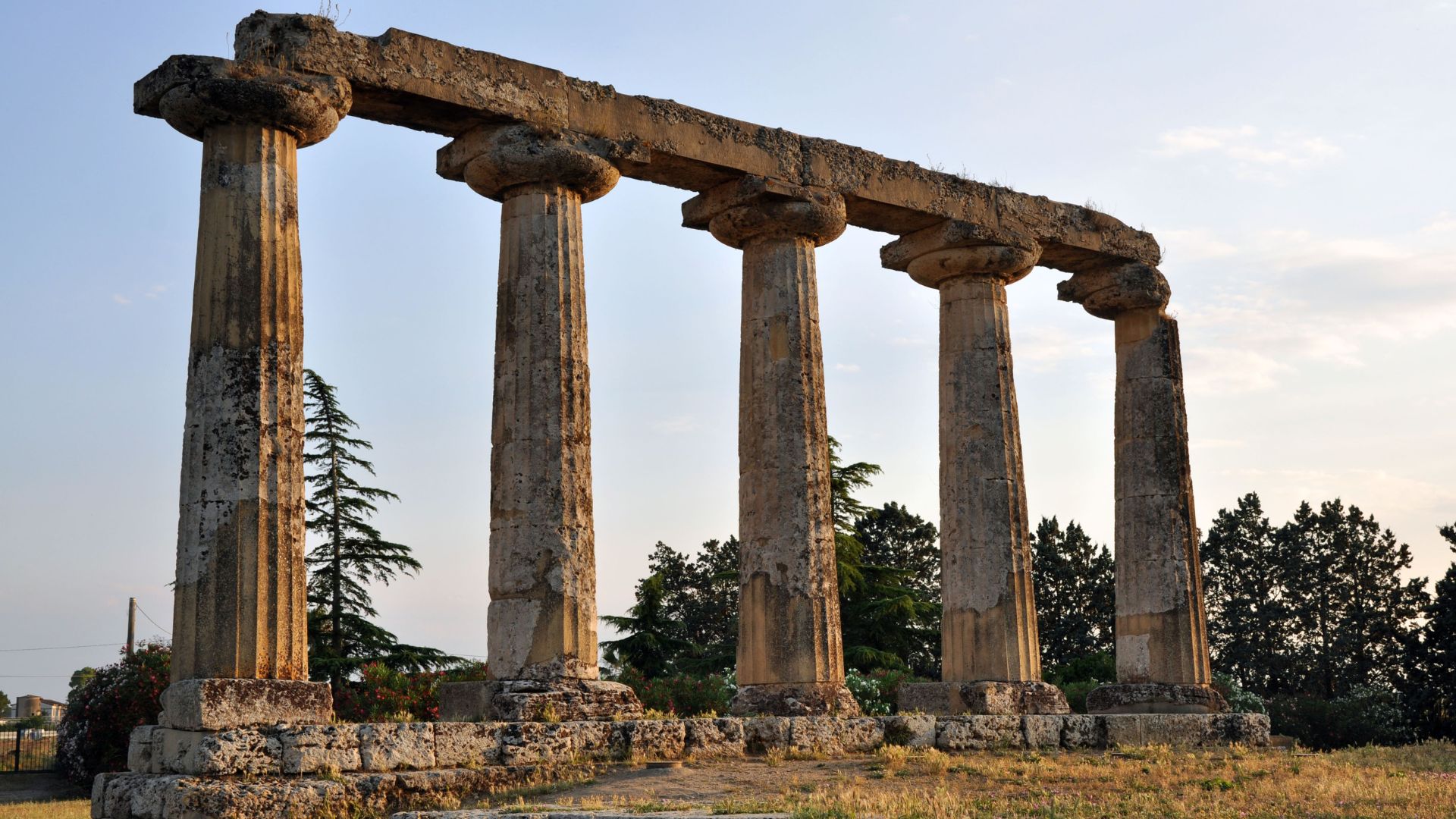
Influence of Greek and Roman Heritage
Metaponto screams Greek influence—just look at the grid street plan, a classic Greek move. Romans later put their stamp on things, adapting Greek buildings and adding their own engineering tricks.
This mix of cultures left behind a fascinating archaeological record. I saw coins with Greek on one side, Roman on the other—a snapshot of a region in transition.
Greek settlers also changed the land. They brought new farming methods, growing grain, olives, and wine—staples that still matter in Basilicata.
Exploring Basilicata: Activities, Flavors, and Natural Beauty
Basilicata isn’t just about architecture. This mountainous region tempts you with outdoor adventures, distinctive flavors, and cultural experiences that feel genuinely Italian.
Hiking and Outdoor Escapades
Pollino National Park tops my list for nature lovers heading to Basilicata. It’s Italy’s largest national park, and the trails wind through ancient pine forests and open alpine meadows.
I spent a day hiking up to Serra del Prete. Along the way, I found wild orchids and saw Bosnian pines that have stood for over 900 years.
Dramatic peaks rise all around, and on a clear day, you can spot both the Tyrrhenian and Ionian seas.
If you want something less intense, head to the scenic trails near Castelmezzano. The views of the village’s rock formations are just incredible.
In summer, thrill-seekers line up for “Volo dell’Angelo” (Flight of the Angel). That zipline connects two mountain villages and, honestly, it’s a rush.
Local Cuisine and Aglianico del Vulture
Basilicata’s food scene sticks to its rural roots—simple, bold flavors, nothing fancy but so satisfying. I loved the orecchiette pasta here, especially when it’s loaded with a rich meat ragù and topped with local pecorino.
The real star, though, is Aglianico del Vulture. This red wine grows on the slopes of an extinct volcano, and it’s robust—just the thing for hearty dishes like lucanica sausage.
You really shouldn’t skip peperoni cruschi (dried crispy peppers). Locals toss them into almost everything, and I get why—they add such a great crunch and flavor.
For dessert, I tried calzoncelli pastries filled with chestnut cream or chocolate. Now I understand why people here rave about them.

Festivals and Cultural Events
If you time your trip with local festivals, you’ll catch Basilicata’s traditions in full swing. I joined the Madonna della Bruna festival in Matera, where crowds parade elaborate paper-mâché floats through the streets before tearing them apart in a wild finale.
Smaller villages throw food festivals to celebrate the harvest. The Sagra della Varola in Melfi is all about chestnuts—music, dancing, and endless chestnut treats.
Summer brings historical reenactments in many towns. In Venosa, I watched medieval tournaments with people dressed in period costumes.
These events usually include local music, traditional dancing, and, of course, plenty of regional food and wine.
Beyond Basilicata: Connections With Puglia and Neighboring Regions
Basilicata blends its cultural and architectural heritage with neighboring regions, making for a tapestry of Southern Italian life. These connections let you explore different landscapes and building styles without traveling far.
Alberobello and the Trulli Tradition
Just east of Basilicata, you’ll find one of Puglia’s most magical spots—Alberobello with its iconic trulli houses. These limestone dwellings with conical roofs look straight out of a fairytale and pair perfectly with Basilicata’s cave homes.
The trulli technique goes back centuries. Builders used local limestone without mortar, which always amazes me.
These homes stay cool in summer and warm in winter—pretty clever, and honestly, not so different from Matera’s caves.
As I wandered through Alberobello’s UNESCO neighborhoods, Rione Monti and Aia Piccola, I noticed many trulli now serve as artisan shops or cozy guesthouses.
If you can, stay overnight. The place feels entirely different once the daytime crowds leave.
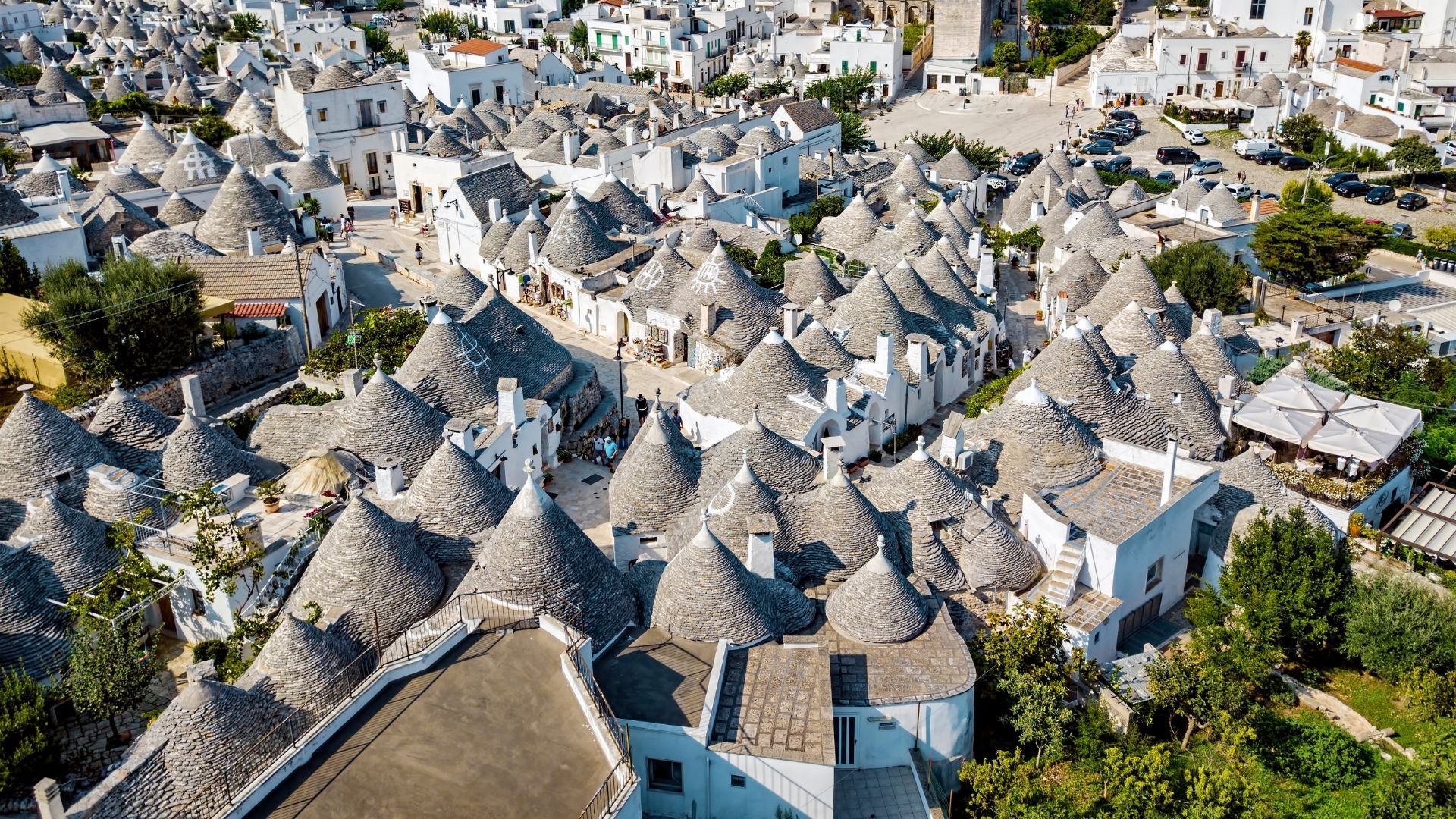
Bari: Gateway to Southern Italy
Bari makes a great jumping-off point for exploring both Puglia and Basilicata. The city buzzes with life and connects directly to Matera and other Basilicata gems.
I wandered Bari Vecchia, the old town, where local women make orecchiette pasta right outside their doors. The Basilica di San Nicola stands out with its Romanesque architecture and, yep, it holds the remains of Saint Nicholas—the original Santa Claus.
From Bari’s port, you’ve got options:
- Ferries to Greece, Croatia, and Albania
- Regional trains for both Puglia and Basilicata
- Car rentals if you want to roam on your own schedule
Seafood here is another level. If you’re up for it, try the fresh sea urchins at the waterfront markets—it’s a true taste of the Adriatic.
Regional Travel Tips and Insights
Honestly, I’ve found the best way to soak up both regions is to plan for about 10 to 14 days.
Spring (April-May) and fall (September-October) usually bring perfect weather and thinner crowds at the big attractions.
Public transportation links up the main towns, but if you want to reach those hidden hilltop villages or quiet beaches, you’ll want to rent a car.
Keep in mind, a lot of smaller roads out in the countryside are still unpaved. GPS can be a bit unreliable, so it’s smart to have a backup map or two.
Must-try regional experiences:
- Try Primitivo wine in Puglia, and definitely don’t skip Aglianico from Basilicata.
- Stop by olive oil producers in both regions for tastings—it’s worth it.
- If you can, join a local festival that celebrates harvest or a saints’ day. The energy is infectious.
You’ll find all kinds of places to stay, from fancy masserias (those fortified farmhouses) to quirky trulli or even cool cave hotels in Matera.
I’d suggest splitting your nights between the coast and inland spots. That way, you get a fuller sense of what these regions are all about.

